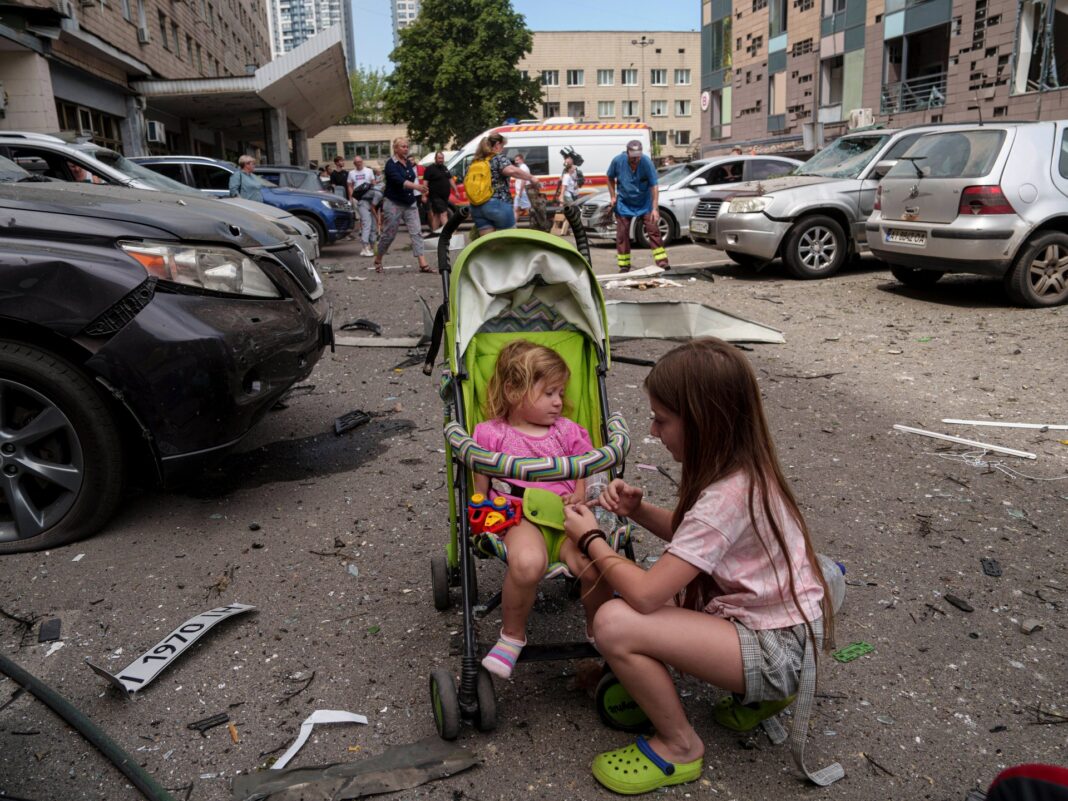Monday’s deadly attack on Ukraine’s capital, Kyiv, which caused severe damage to the country’s largest children’s hospital and a healthcare centre for women, starkly emphasised the devastating impact of the ongoing war. Such assaults cause immediate tragedy but also ripple through the demographic fabric of the nation, exacerbating already critical population challenges.
The ongoing shelling across Ukraine has significantly impacted health services, including maternal and neonatal units. Hospitals have struggled to deliver adequate care due to strained resources, damaged facilities and weakened energy supplies. The stress and trauma from constant bombardments, especially on the front lines, have also affected pregnant women. Doctors in the country have reported increased rates of pregnancy complications, premature deliveries and low-weight births.
As we mark World Population Day, we must explore whether there are solutions to these challenges and what global experiences might be useful for Ukraine.
Countries around the world are experiencing demographic shifts. While some see their populations grow, others, like Ukraine, face depopulation and ageing. The birthrate in Eastern European countries ranges from approximately 1.3 to 1.8 children per woman, similar to other parts of Europe. However, unlike Western Europe, where immigration has stabilised or even increased populations, Eastern Europe, including Ukraine, has seen significant declines due to migration and very low birthrates.
The full-scale invasion of Russia has deepened Ukraine’s demographic crisis: birthrates have dropped below 1.0 – becoming one of the lowest in the world – while Ukraine’s already extremely low life expectancy has further declined, especially among the male population, and migration patterns have dramatically shifted. The mass displacement of people within the country and abroad has depopulated certain regions and aged the nation, as most refugees are women, youth and children. Nearly 2.5 years into the full-scale war, Ukraine’s population has shrunk by more than 10 million, with almost five million people in territories now occupied by Russia. Without strategic intervention, this deep population decline may cause consequences for generations.
Some suggest straightforward solutions like increasing child benefits to boost birthrates. While such measures might provide short-term gains, they fail to ensure long-term demographic stability. Financial incentives alone do not adequately address the underlying issues, such as caregiving challenges and limited developmental opportunities for children.
The experience of Balkan countries shows that increasing birthrates does not guarantee that these children will remain in their home country as adults. Social workers in Ukraine observed that increased benefits in the early 2000s led to higher birthrates among low-income families, who then struggled to raise their children. A survey by the Institute of Demography and Social Research found that financial aid influenced the birthrate for only about 12 percent of parents, suggesting that most families would have had children, regardless of the benefits.
Global experience shows that effective solutions must consider the individual needs and capabilities of all population groups. Therefore, improving Ukraine’s demographic situation requires creating an environment where everyone has opportunities for self-realisation and can harmoniously balance career and parenthood.
For instance, Sweden’s family-friendly policies, implemented since the 1970s, demonstrate the long-term benefits of a family model where both parents can work. Higher family incomes increase children’s chances of accessing quality education, and responsible parenting systems support women in the labour market, encourage men to take parental leave, and promote gender equality.
Ukraine has made progress in this regard. In 2021, a law was adopted to ensure equal childcare opportunities for both parents, introducing a new type of leave for fathers upon childbirth.
Understanding the current population structure and its needs is essential for developing strong strategies to overcome demographic challenges. However, the last population census in Ukraine was conducted in 2001, and conducting one now, amid a full-scale war with millions in forced migration, is not practical – though the United Nations Population Fund (UNFPA) has supported the Ukrainian government in developing a demographic strategy to address its population, social and humanitarian challenges and goals through the war and into the long term.
Addressing demographic challenges also means focusing on inclusivity. The rising level of disability due to the war requires full inclusion of people with disabilities in the labour market, which involves both physical adaptations and policy formulation that considers their needs and capabilities. Additionally, the ageing population trend necessitates policies that improve older individuals’ access to the labour market, allowing them to continue contributing to economic growth and enhancing their quality of life and offering a more profound sense of purpose.
With many men conscripted into the war effort, Ukraine has also seen a rise in women-led households. This shift has created economic gaps that women must fill, highlighting the necessity for an inclusive economy that fosters skill-building and empowers women to take on roles traditionally held by men. In agriculture, for instance, Ukraine, known as the “breadbasket of Europe,” depends on women’s increased participation to sustain its vital grain production and maintain local and regional food production.
Ukraine’s path to demographic sustainability begins with assessing its demographic capital and investing in its development. As soon as the security situation allows, Ukraine should conduct a population census, which has not been done for more than 20 years. This will not only establish the number of people in the country but also identify their socio-demographic characteristics that will be crucial to planning for the country’s recovery and development. Political measures should be grounded in a thorough analysis of these demographic data, aiming to place human rights and opportunities at the forefront. While the ongoing war complicates these efforts, fostering gender-inclusive policies, overcoming stereotypes, and providing economic opportunities for all will drive human capital development.
Ukraine’s demographic situation is a multifaceted challenge that requires comprehensive, inclusive and long-term solutions. Only by addressing the root causes and creating supportive environments for all citizens can we navigate this crisis and build a sustainable future for Ukraine.
The views expressed in this article are the author’s own and do not necessarily reflect Al Jazeera’s editorial stance.







